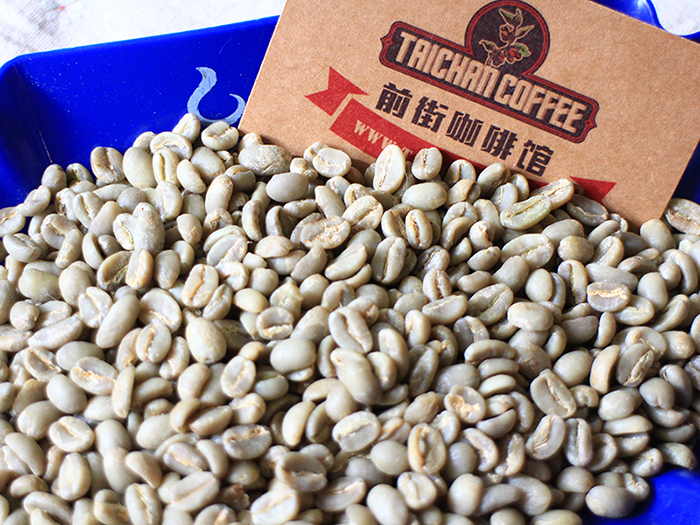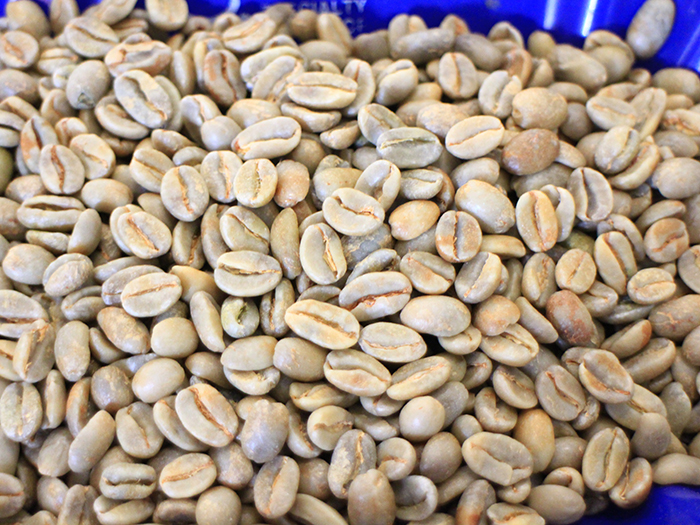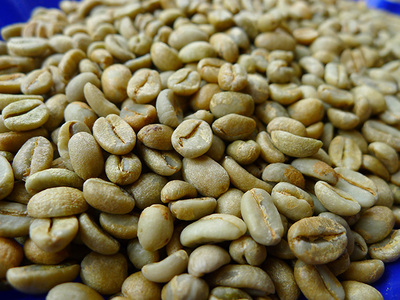Ethiopia Sidama Sun-treated Raw Beans Lion King 2015 New Beans Unroasted Raw Coffee Beans
The coffee flavor of Sidamo is very diverse, and the different soil types, microclimate and countless native coffee species make the coffee produced in each town have obvious differences and characteristics. In 2010-12, three consecutive times won the United States authoritative coffee review website coffeereview92 to 94 high marks, which shows the extraordinary value of raw beans in this area! The territory is covered by towering mountains, highlands, plateaus, valleys and plains with a variety of topography. The geology of the area belongs to the fertile and well-drained volcanic soil, which is nearly two meters deep and the surface soil is dark brown or brown. The biggest advantage of this place is that the soil fertility is maintained through the circulation of natural organic matter, with the withered leaves or litter of the surrounding trees and the residual roots of plants as natural fertilizer. This batch is produced by Sirsa Shilcho Cooperative near DillaTown. The cooperative was founded in 1976 and is currently a member of the Sidamo Farmers' Cooperative Union SCFCU (SidamoCoffeeFarmerCooperativeUnion). We have screened the coffee again and again and selected this batch for excellent flavor.
Ethiopia is the country where coffee was first discovered. Today, there is still a lot of wild coffee for farmers to harvest in the primeval forest. Ethiopia is a country with poverty, drought and civil war, but it is still the most important coffee producer in terms of coffee quality and output, and it is also the best and top coffee producer in the past year or two.
Ethiopian coffee can be divided into two treatments. Washing treatment method II. Natural sun treatment. Nowadays, every cooperative or even a small coffee farm in Ethiopia produces coffee beans of the above two treatments at the same time, whether it is the well-known Yegashev producing area in Taiwan or the Sidamo producing area. Not only that, in Ethiopia, which is currently the country with the fastest development of coffee, it not only makes coffee different in treatment, but also makes aroma and taste different due to the adjustment of different techniques and processes. Yegashev sun beans are different from Sidamo sun beans in aroma, which often gives people an illusion. The aroma is mild, low-sinking, citric acid is soft and low-key, the consistency of flavor is high, and the taste of Isopia coffee beans is won by taste, while the strong aroma of Esopia coffee beans shows strong aroma, the weak flavor of citric acid is not obvious, and the complex flavor is characterized by flower or fruit fragrance.
In recent years, many emerging small producing areas or cooperatives in the Sidamo and Yegashev producing areas will be sold in the international market under the name of their own cooperatives or farms, which shows confidence in their own coffee. Hope to establish brand and loyalty in the international coffee market, coffee farmers insist on harvesting mature coffee beans and strictly handle every process. Both natural washing and natural tanning are outstanding, with an unexpected extremely fragrant aroma and excellent taste. I think this is why Ethiopian coffee is expected by coffee fans every year. For example, the Dutch government-assisted Red Cherry Project (OperationCherryRed) impressed the world with the magnificent aroma of strawberry cookies in 2008 and Cambedo Manor in 2009, which has been reinforced by the sun beans produced in Ethiopia in recent years.
Local farmers in West Dharma manually select moderately mature coffee cherries for sun treatment, turning the coffee cherries on the scaffolding every two hours during the sun for about 15 to 17 days. to ensure that the coffee cherries are evenly and completely dry, followed by shelling and packaging.
Flavor
Dried fragrance: wild ginger, jasmine, honey, lemon peel
Wet fragrance: honey sweetness, maple syrup, cream, citrus, flower aroma
Flavor: strong fruit tonality, rich fruit flavors such as cantaloupe, strawberries, peaches and ripe berries, silky texture, clean and balanced taste, full-bodied and changeable finish.

Important Notice :
前街咖啡 FrontStreet Coffee has moved to new addredd:
FrontStreet Coffee Address: 315,Donghua East Road,GuangZhou
Tel:020 38364473
- Prev

Ethiopia unbaked Yega Sheffield Erika boutique coffee raw beans sun-dried aricha2015 new beans
This batch is produced at the KebelAricha processing plant, where there are about 650,700 small coffee farmers who send ripe coffee berries here for processing in exchange for cash. After the treatment plant selects the available berries, they are directly exposed to the sun on the scaffolding and are turned every 2-3 hours in the first few days to prevent overfermentation. After four to six weeks of sun exposure, the workers will look at the weather
- Next

Vivette Nan fruit imported raw beans Guatemala Central American SHB very hard beans single coffee raw bean price
Guatemala, which is famous for its highland topography, has a unique flavor of high-altitude hard beans that perform well in all-inclusive coffee producing areas and produce high-quality coffee with eye-catching performance. Guatemalan coffee has rich flavor changes and strong acidity, and sometimes can feel some changes in spices, from medium to full consistency, high complexity, is the best representative of complex style.
Related
- Detailed explanation of Jadeite planting Land in Panamanian Jadeite Manor introduction to the grading system of Jadeite competitive bidding, Red bid, Green bid and Rose Summer
- Story of Coffee planting in Brenka region of Costa Rica Stonehenge Manor anaerobic heavy honey treatment of flavor mouth
- What's on the barrel of Blue Mountain Coffee beans?
- Can American coffee also pull flowers? How to use hot American style to pull out a good-looking pattern?
- Can you make a cold extract with coffee beans? What is the right proportion for cold-extracted coffee formula?
- Indonesian PWN Gold Mandrine Coffee Origin Features Flavor How to Chong? Mandolin coffee is American.
- A brief introduction to the flavor characteristics of Brazilian yellow bourbon coffee beans
- What is the effect of different water quality on the flavor of cold-extracted coffee? What kind of water is best for brewing coffee?
- Why do you think of Rose Summer whenever you mention Panamanian coffee?
- Introduction to the characteristics of authentic blue mountain coffee bean producing areas? What is the CIB Coffee Authority in Jamaica?

